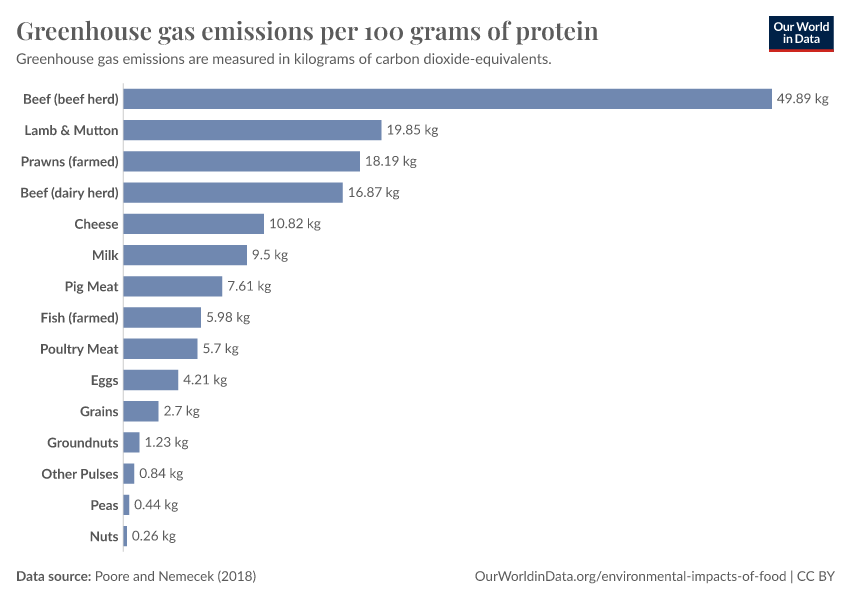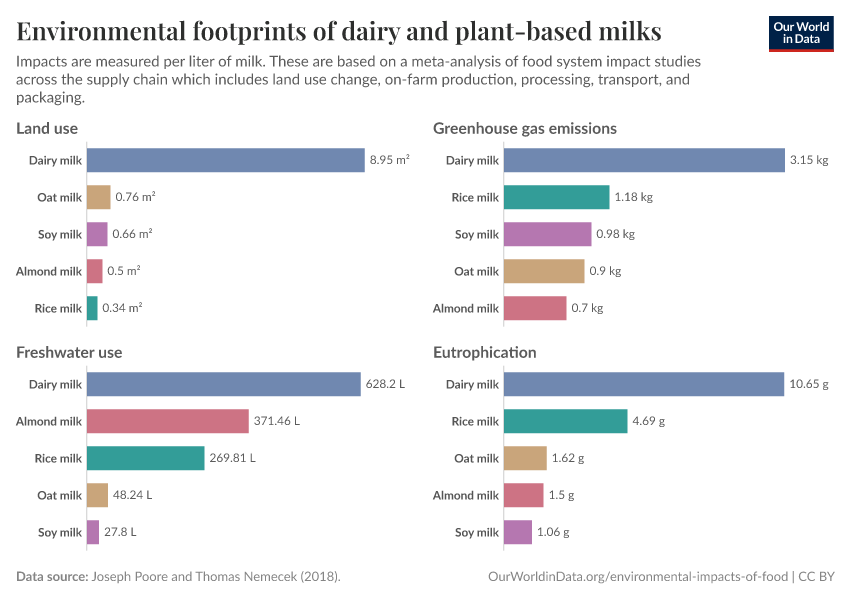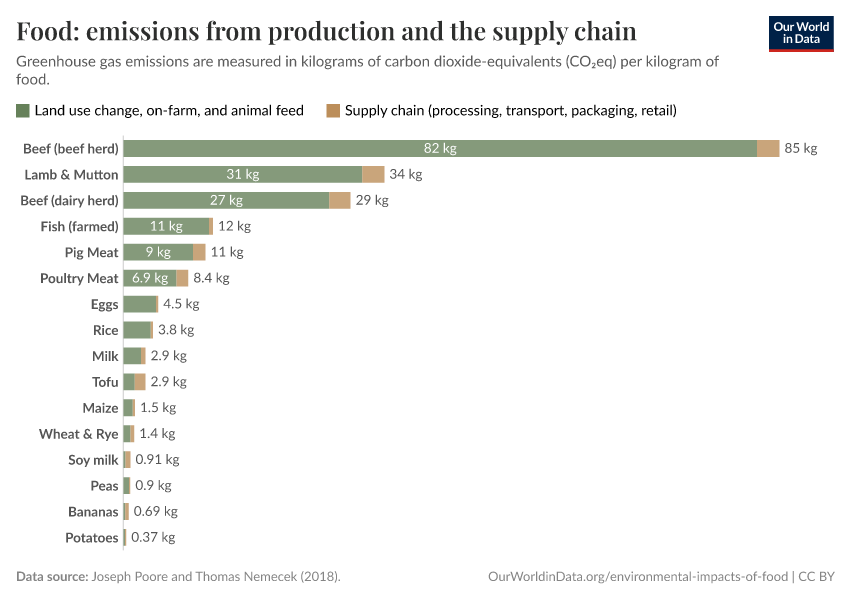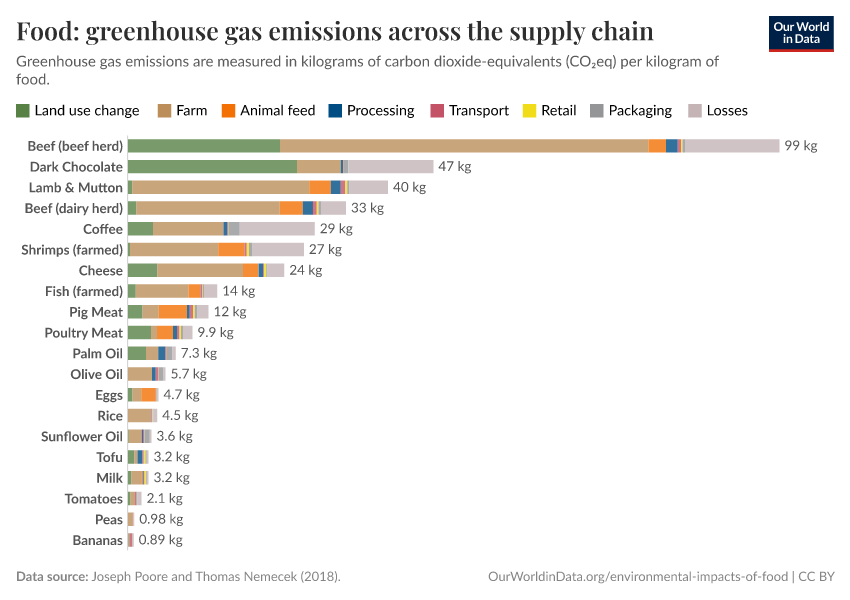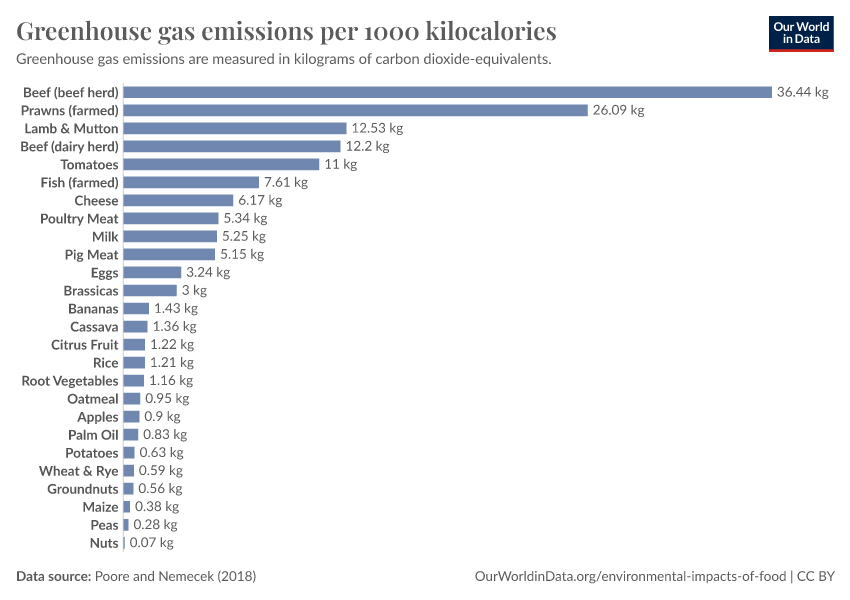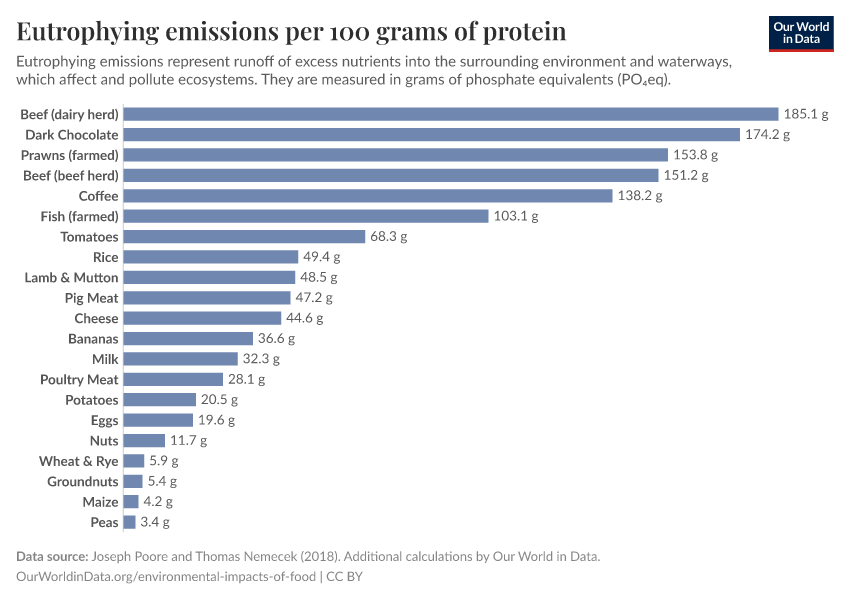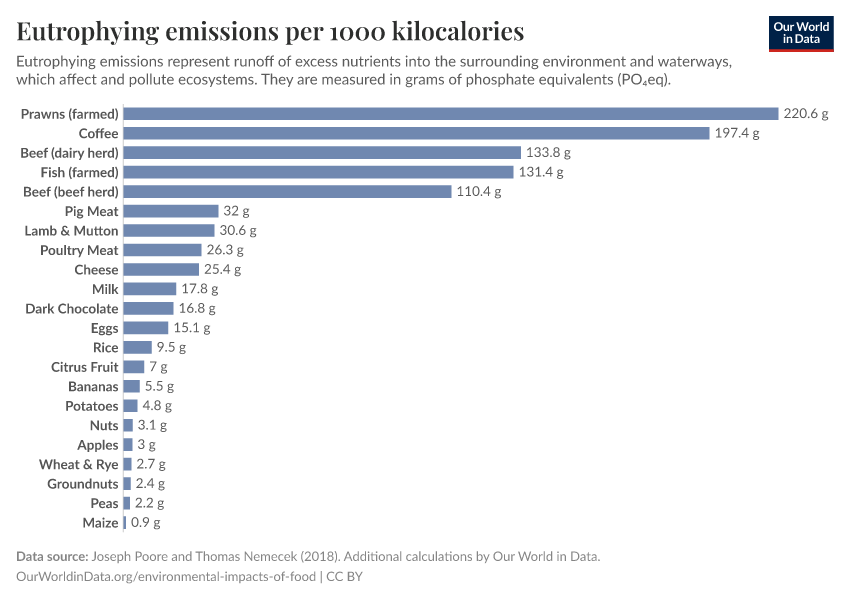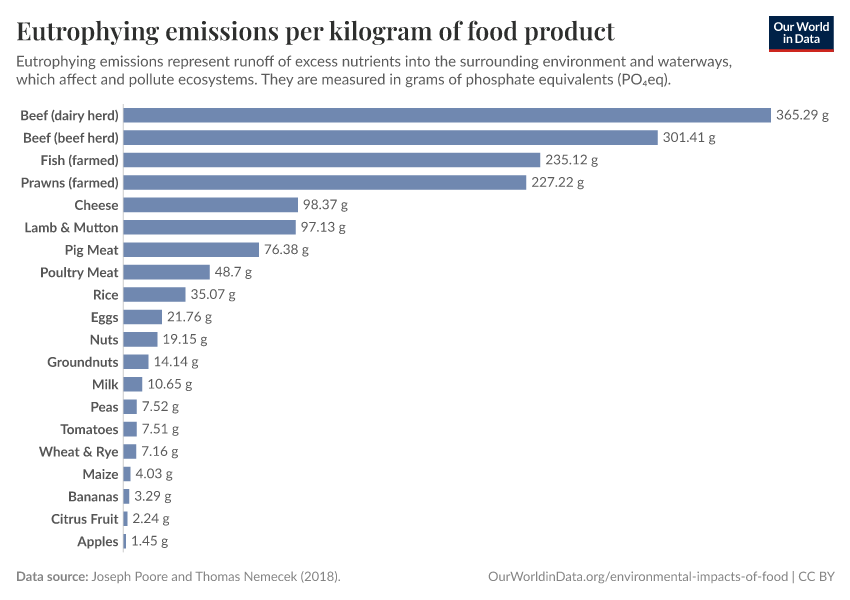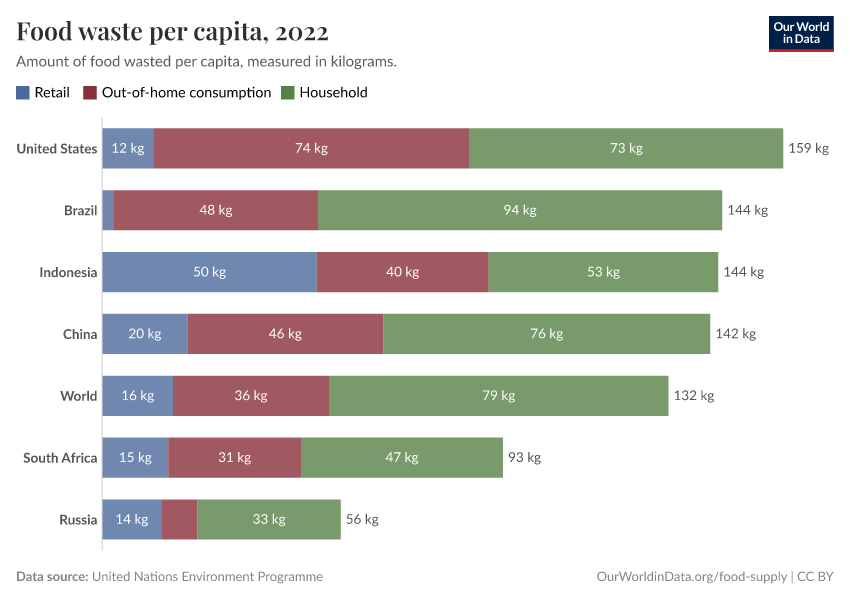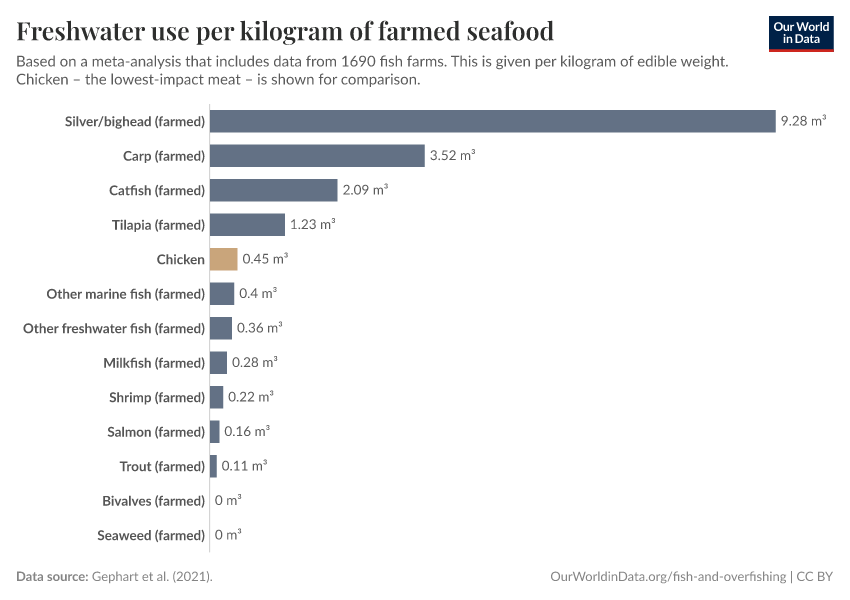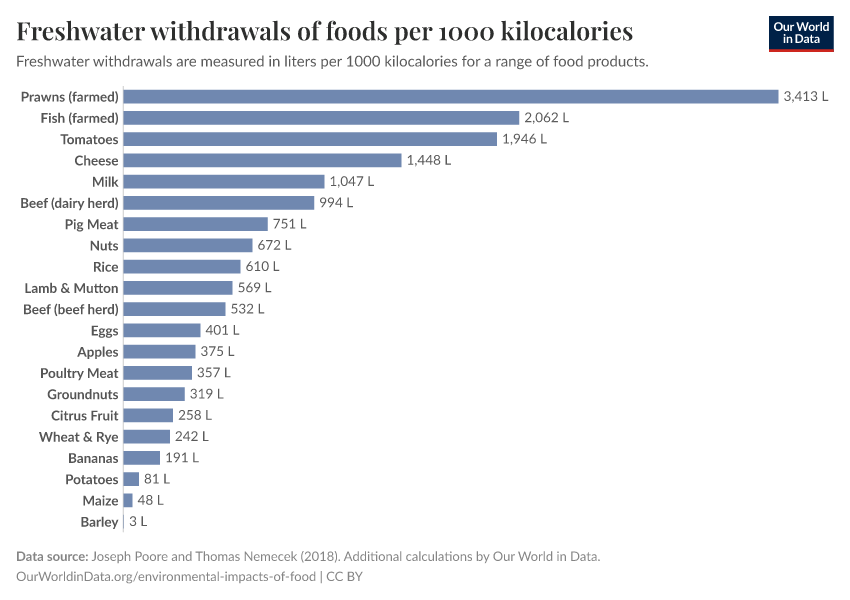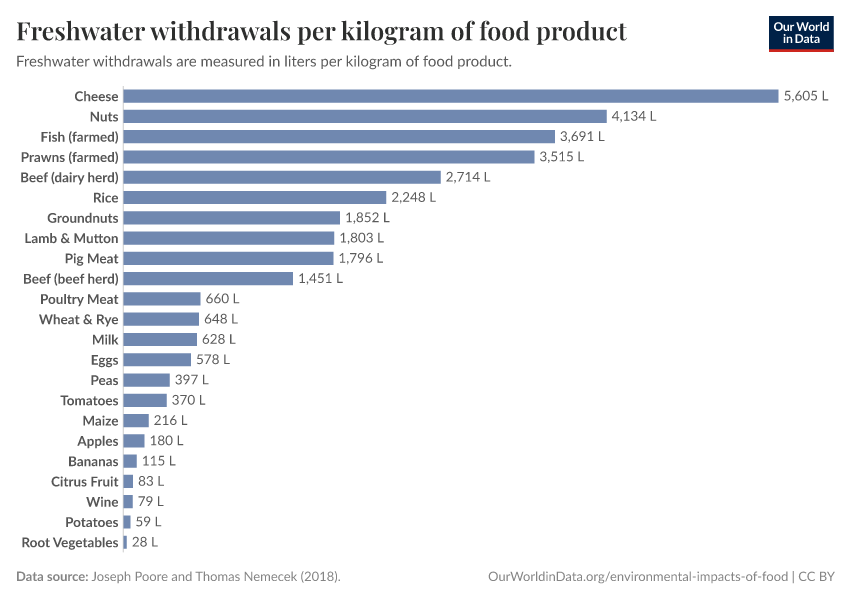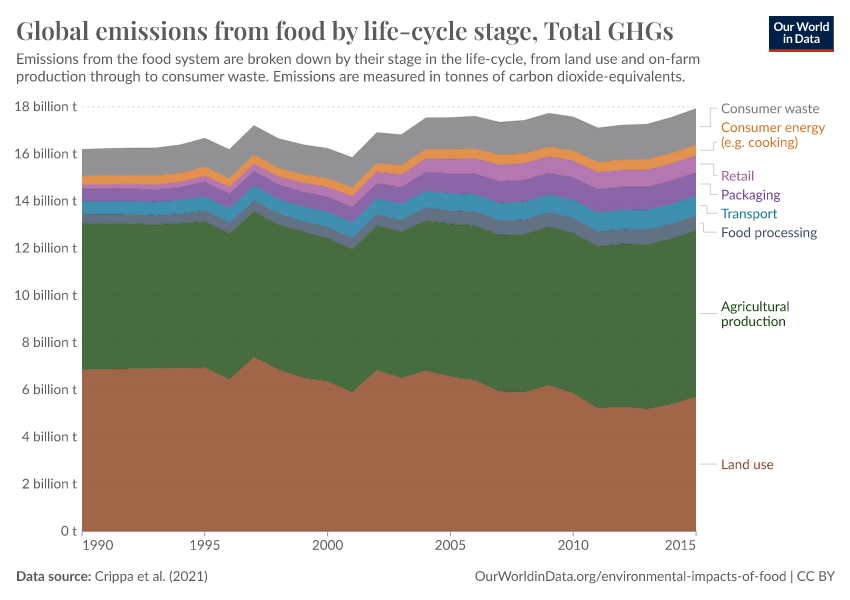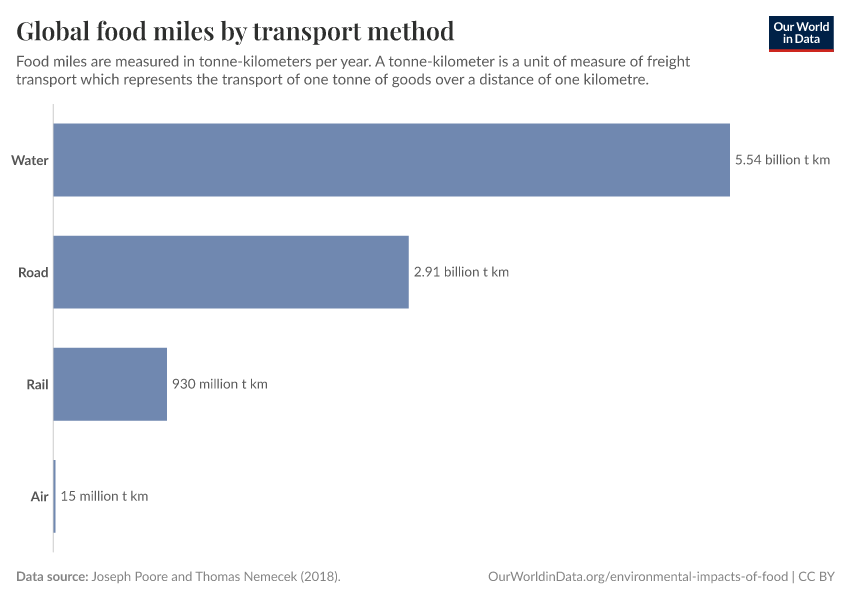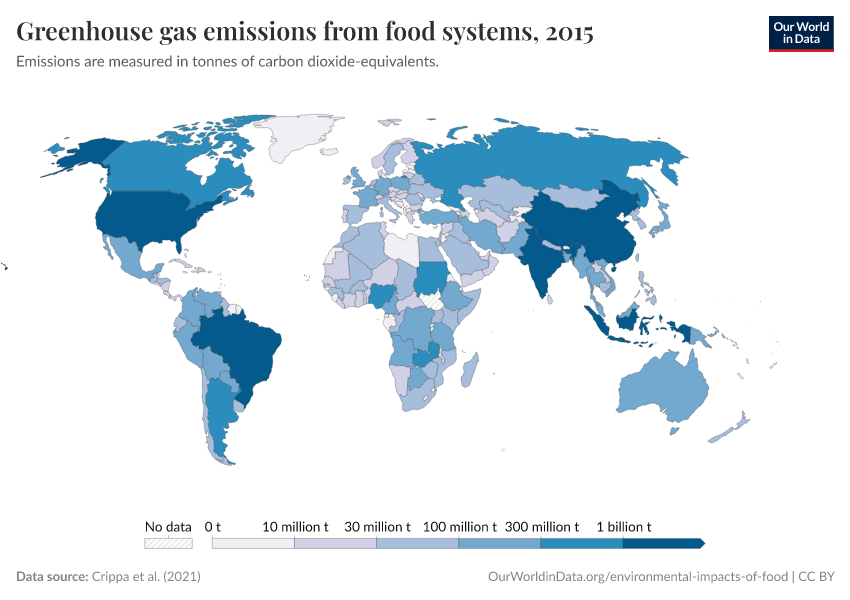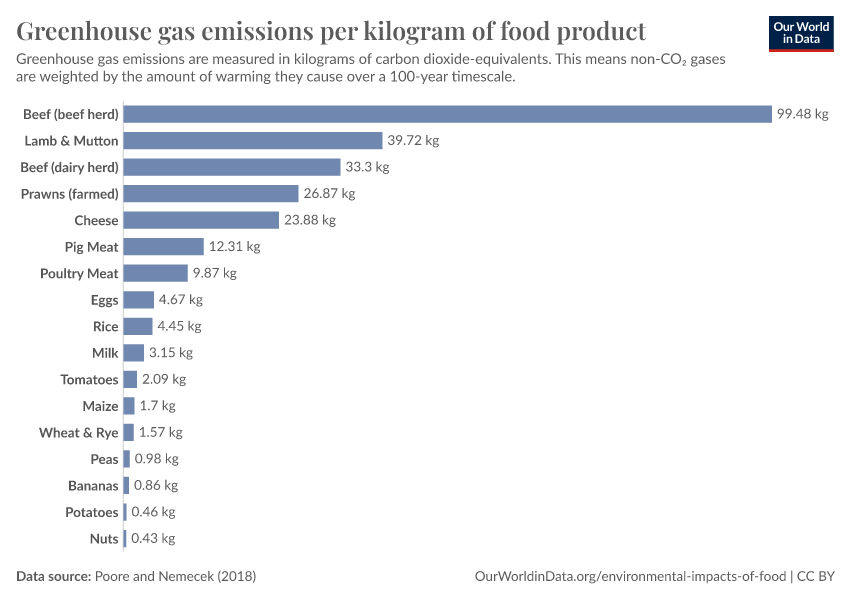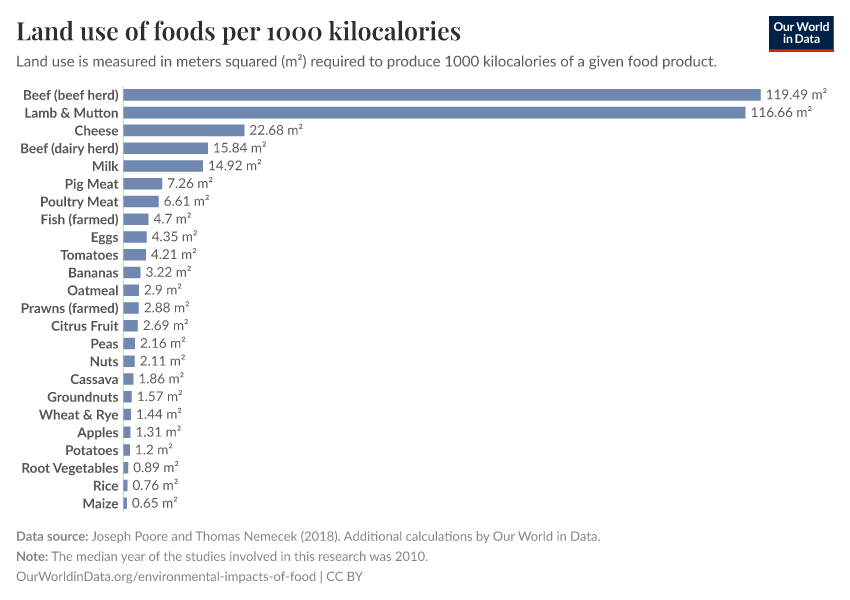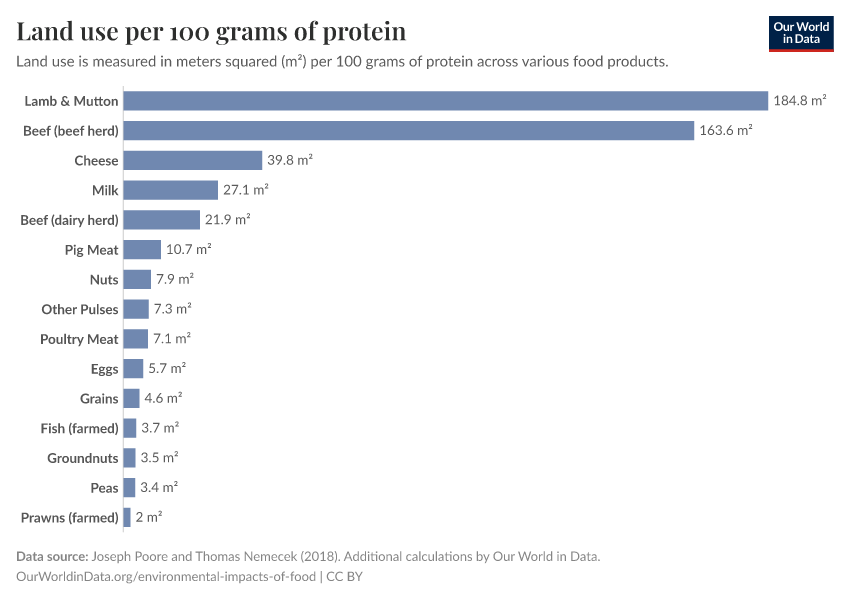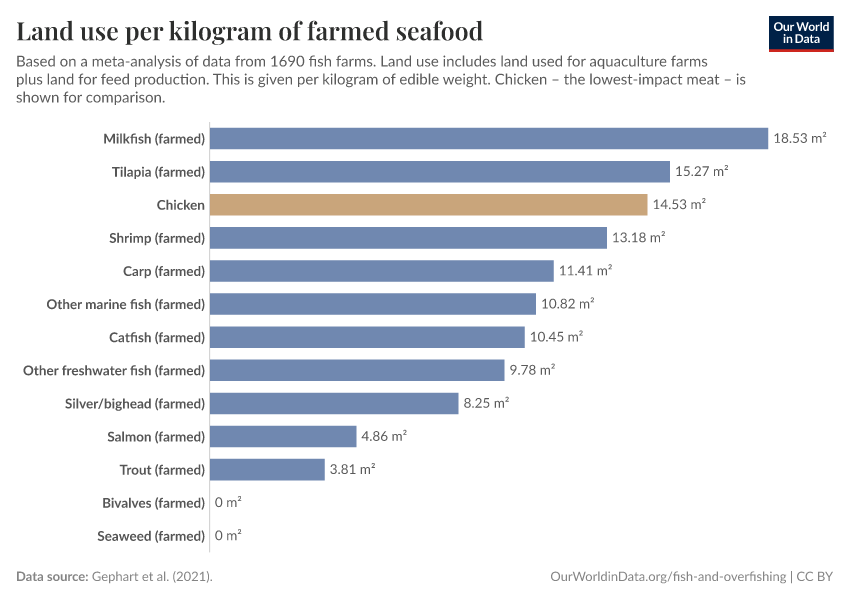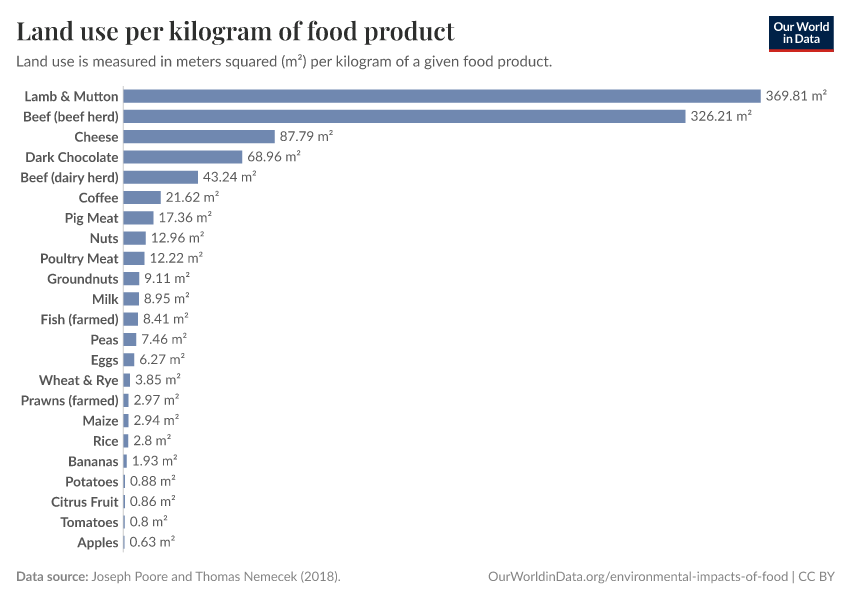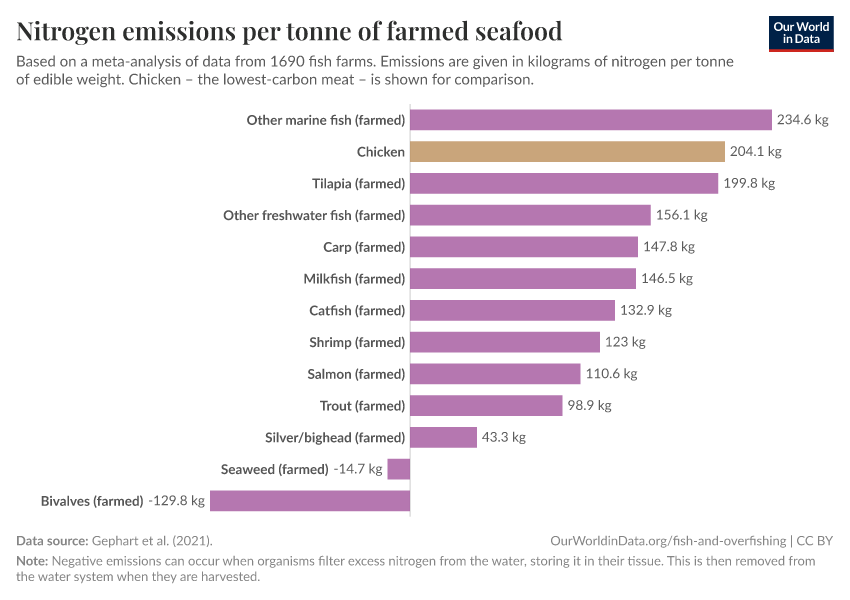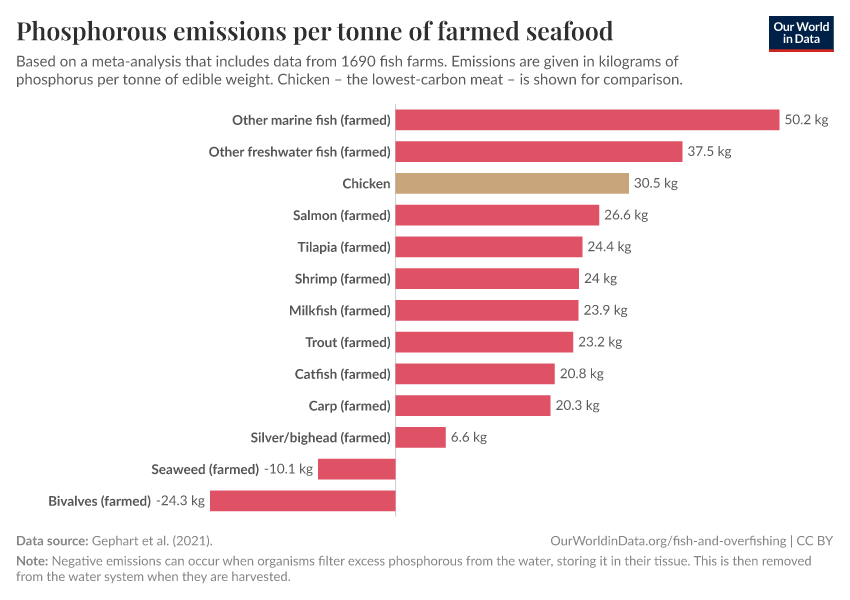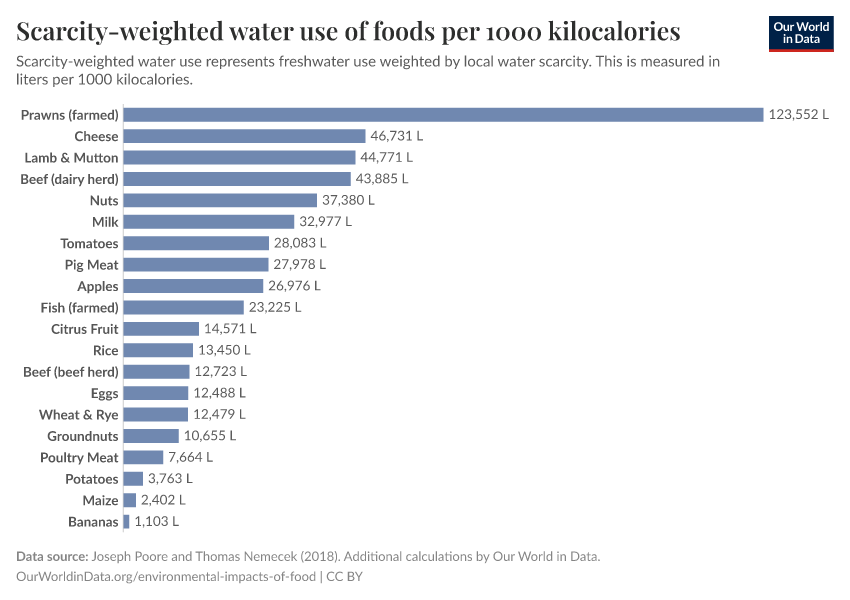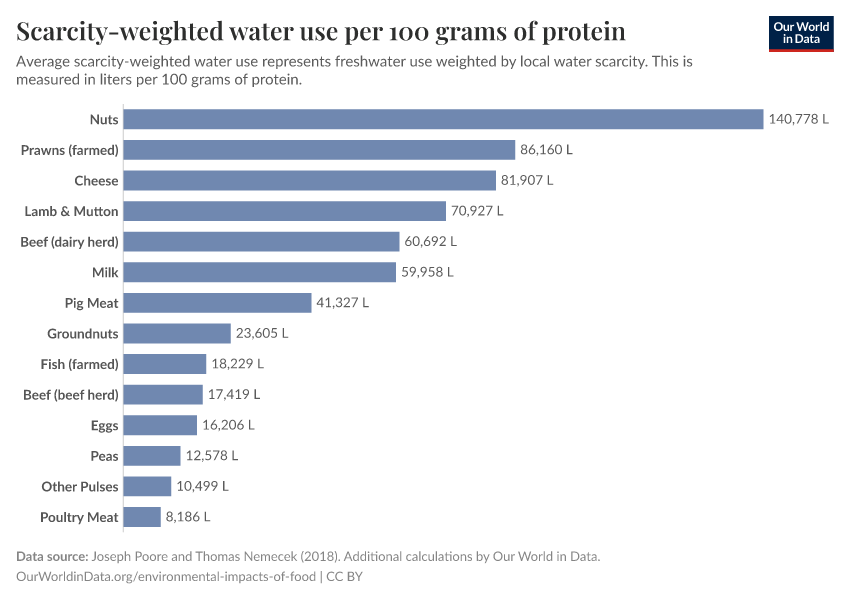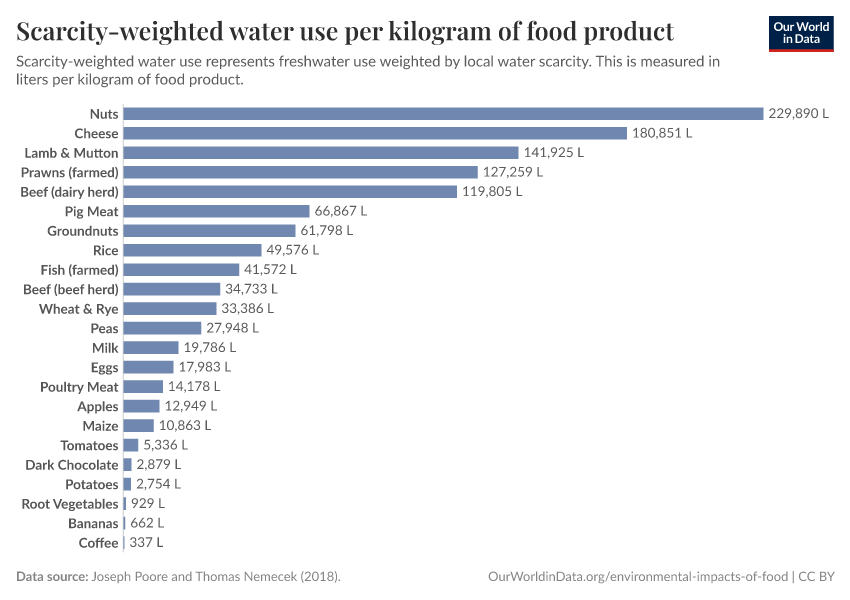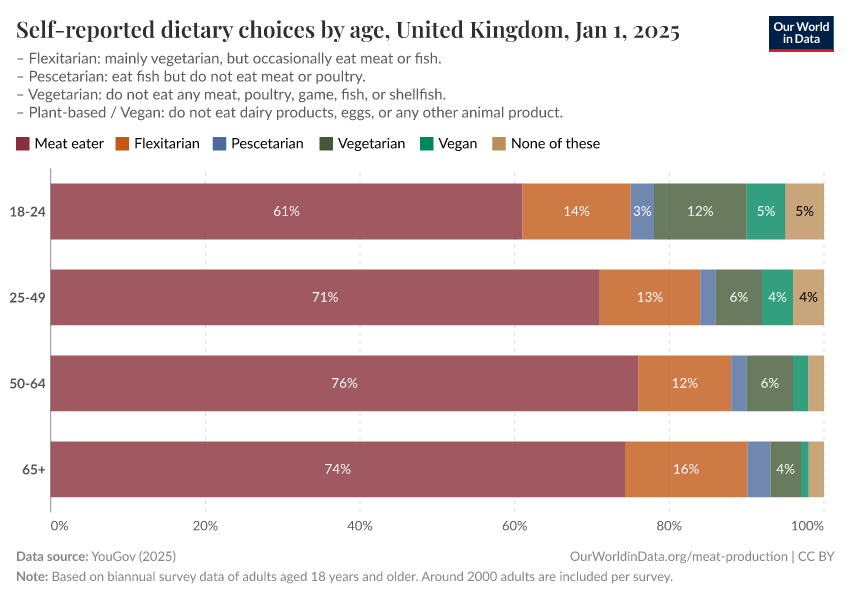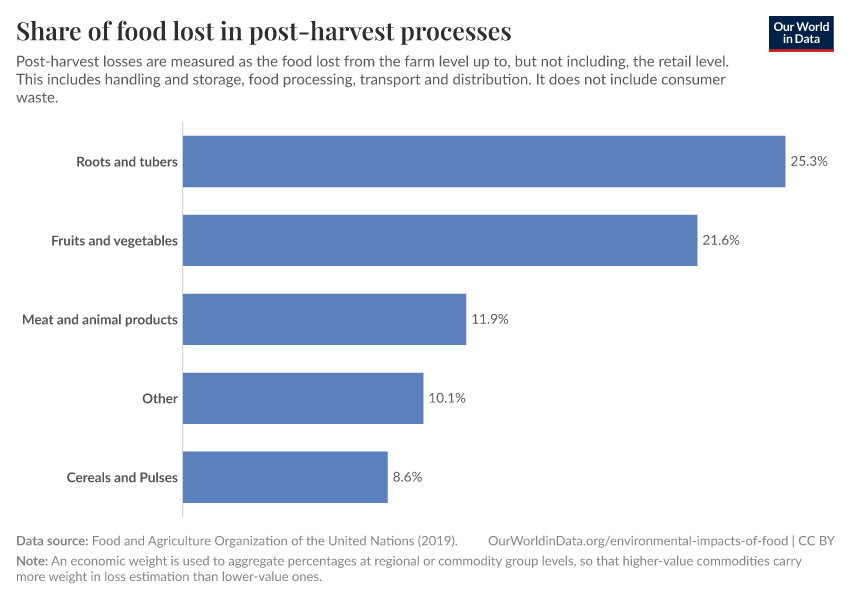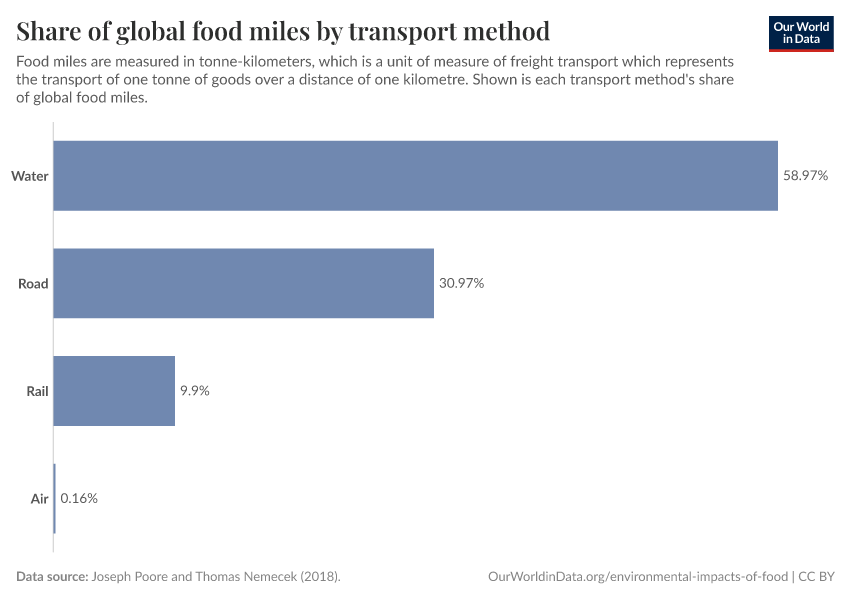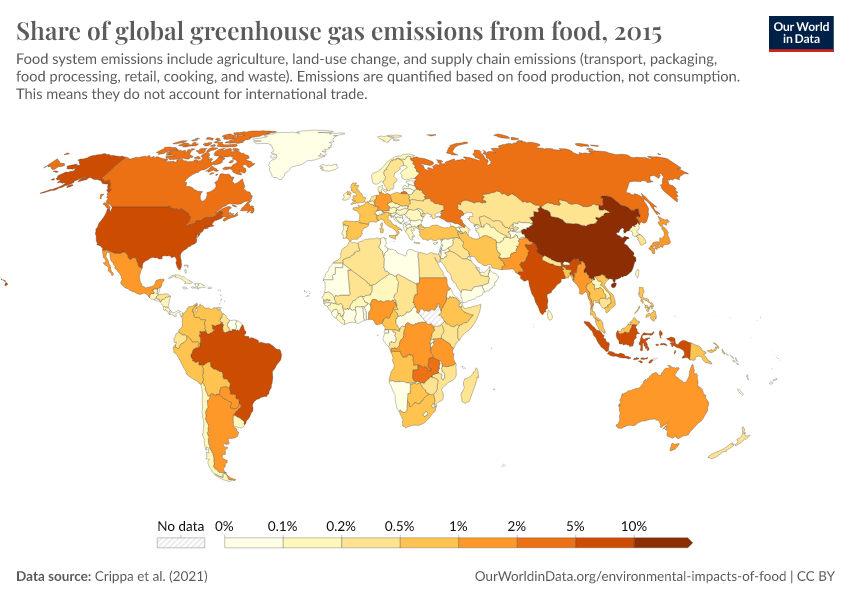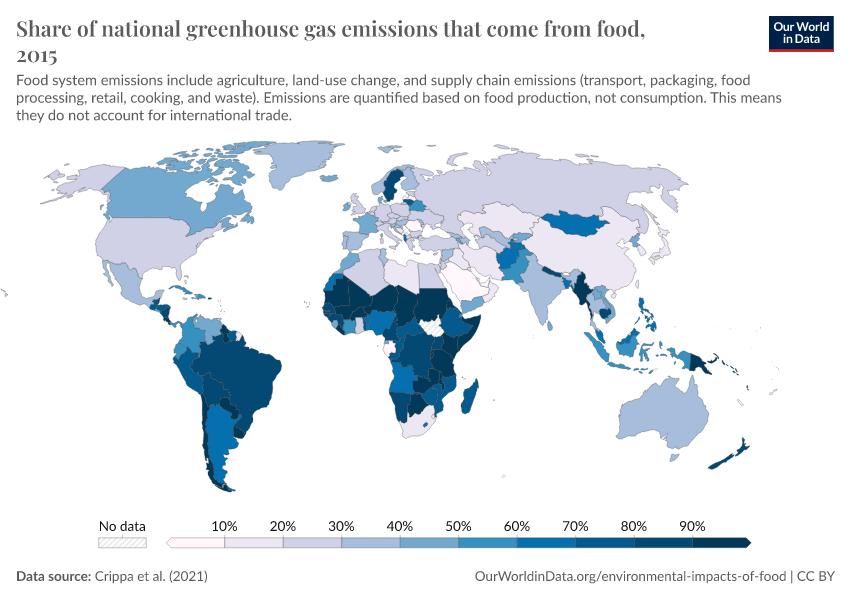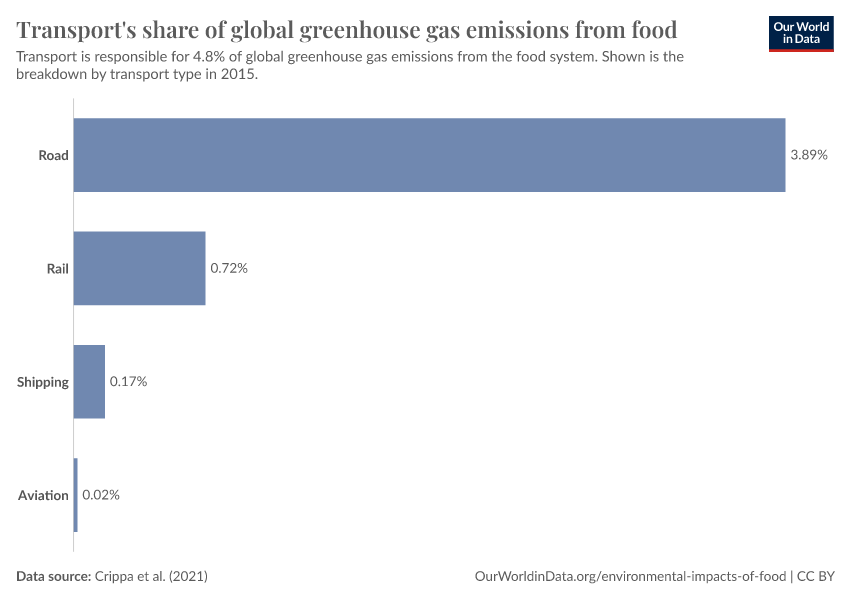Environmental Impacts of Food Production
What are the environmental impacts of food production? How do we reduce the impacts of agriculture on the environment?
Agriculture has a significant environmental impact in three key ways.
First, it requires large amounts of fresh water, which can cause significant environmental pressures in regions with water stress. It needs water as input and pollutes rivers, lakes, and oceans by releasing nutrients.
It is a crucial driver of climate change, responsible for around one-quarter of the world’s greenhouse gas emissions.
Finally, agriculture has a massive impact on the world’s environment due to its enormous land use. Half of the world’s habitable land is used for agriculture.
Large parts of the world that were once covered by forests and wildlands are now used for agriculture. This loss of natural habitat has been the main driver for reducing the world’s biodiversity. Wildlife can rebound if we reduce agricultural land use and allow natural lands to restore.
Ensuring everyone has access to a nutritious diet sustainably is one of the most significant challenges we face. On this page, you can find our data, visualizations, and writing relating to the environmental impacts of food.
Research & Writing
You want to reduce the carbon footprint of your food? Focus on what you eat, not whether your food is local
‘Eat local’ is a common recommendation to reduce the carbon footprint of your diet. But transport tends to account for a small share of greenhouse gas emissions. How does the impact of what you eat compare to where it’s come from?
Food production is responsible for one-quarter of the world’s greenhouse gas emissions
One-quarter of the world’s greenhouse gas emissions result from food and agriculture. What are the main contributors to food’s emissions?
Food production and climate change
Food production is responsible for one-quarter of the world’s greenhouse gas emissions
How much of global greenhouse gas emissions come from food?
Emissions from food alone could use up all of our budget for 1.5°C or 2°C – but we have a range of opportunities to avoid this
What are the carbon opportunity costs of our food?
Food miles and transport
Environmental impacts of meat and dairy
Less meat is nearly always better than sustainable meat, to reduce your carbon footprint
Dairy vs. plant-based milk: what are the environmental impacts?
The carbon footprint of foods: are differences explained by the impacts of methane?
If the world adopted a plant-based diet we would reduce global agricultural land use from 4 to 1 billion hectares
Land use and deforestation
Other articles on food impacts
Key Charts on Environmental Impacts of Food Production
See all charts on this topicEndnotes
Poore, J., & Nemecek, T. (2018). Reducing food’s environmental impacts through producers and consumers. Science, 360(6392), 987-992.
FAO. (2011). The state of the world’s land and water resources for food and agriculture (SOLAW) – Managing systems at risk. Food and Agriculture Organization of the United Nations, Rome and Earthscan, London.
Bar-On, Y. M., Phillips, R., & Milo, R. (2018). The biomass distribution on Earth. Proceedings of the National Academy of Sciences, 115(25), 6506-6511.
Ellis, E. C., Klein Goldewijk, K., Siebert, S., Lightman, D., & Ramankutty, N. (2010). Anthropogenic transformation of the biomes, 1700 to 2000. Global Ecology and Biogeography, 19(5), 589-606.
Crippa, M., Solazzo, E., Guizzardi, D., Monforti-Ferrario, F., Tubiello, F. N., & Leip, A. J. N. F. (2021). Food systems are responsible for a third of global anthropogenic GHG emissions. Nature Food, 2(3), 198-209.
Clark, Michael A., Nina GG Domingo, Kimberly Colgan, Sumil K. Thakrar, David Tilman, John Lynch, Inês L. Azevedo, and Jason D. Hill. “Global food system emissions could preclude achieving the 1.5° and 2° C climate change targets.” Science, 370, no. 6517 (2020): 705-708.
’Food miles’ are measured in tonne-kilometers which represents the transport of one tonne of goods by a given transport mode (road, rail, air, sea, inland waterways, pipeline etc.) over a distance of one kilometer. Poore & Nemecek (2018) report that of the 9.4 billion tonne-kilometers of global food transport, air-freight accounted for only 15 million. This works out at only 0.16% of the total; most foods are transported by boat.
We get this footprint value as: [9000km * 0.023kg per tonne-kilometer / 1000 = 0.207kg CO2eq per kg].
Cite this work
Our articles and data visualizations rely on work from many different people and organizations. When citing this topic page, please also cite the underlying data sources. This topic page can be cited as:
Hannah Ritchie, Pablo Rosado, and Max Roser (2022) - “Environmental Impacts of Food Production” Published online at OurWorldinData.org. Retrieved from: 'https://ourworldindata.org/environmental-impacts-of-food' [Online Resource]BibTeX citation
@article{owid-environmental-impacts-of-food,
author = {Hannah Ritchie and Pablo Rosado and Max Roser},
title = {Environmental Impacts of Food Production},
journal = {Our World in Data},
year = {2022},
note = {https://ourworldindata.org/environmental-impacts-of-food}
}Reuse this work freely
All visualizations, data, and code produced by Our World in Data are completely open access under the Creative Commons BY license. You have the permission to use, distribute, and reproduce these in any medium, provided the source and authors are credited.
The data produced by third parties and made available by Our World in Data is subject to the license terms from the original third-party authors. We will always indicate the original source of the data in our documentation, so you should always check the license of any such third-party data before use and redistribution.
All of our charts can be embedded in any site.
